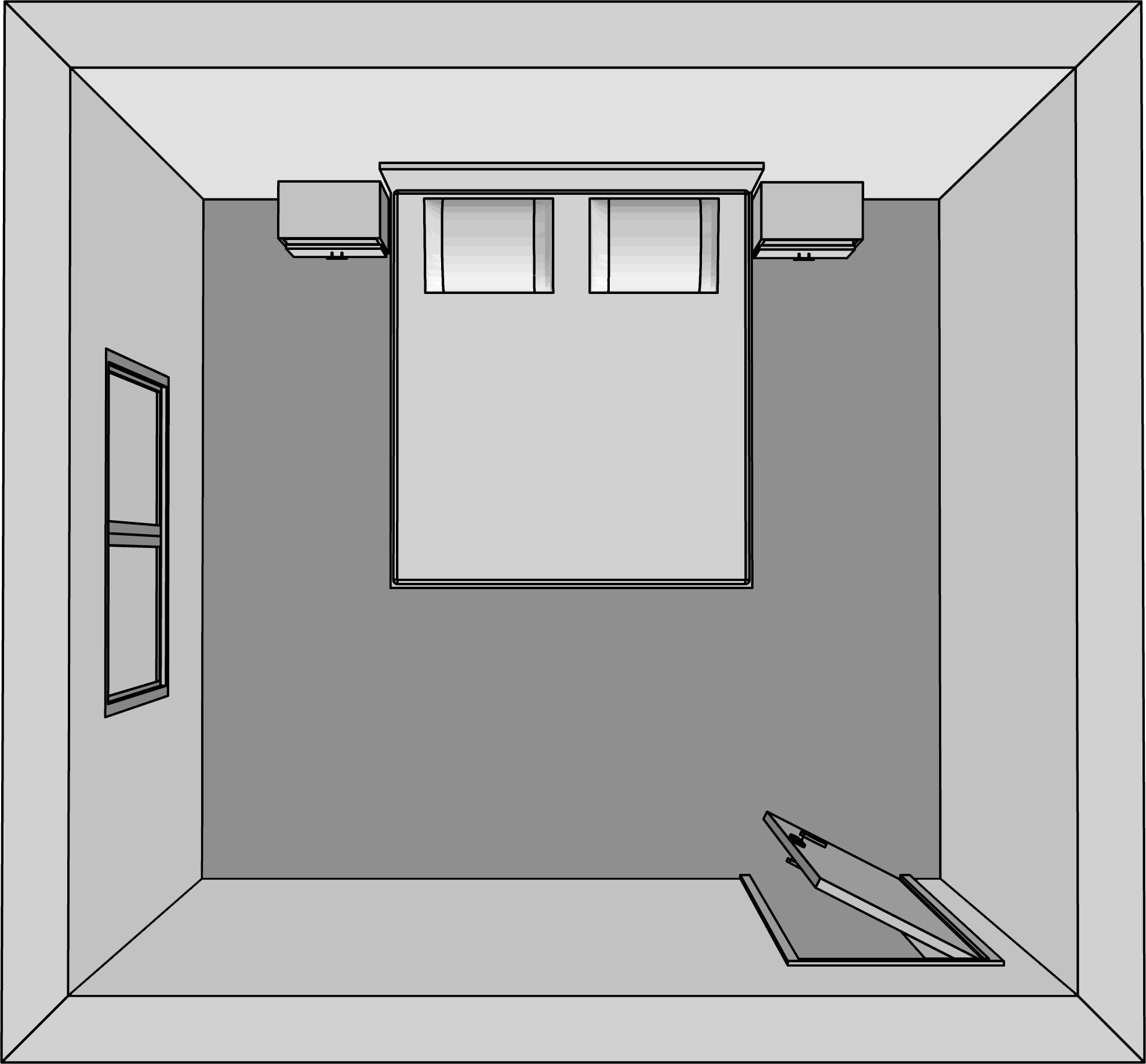Practical Considerations for Bed Placement

The placement of your bed is crucial for creating a comfortable and functional bedroom. It goes beyond aesthetics, impacting your sleep quality, energy levels, and overall well-being. By carefully considering practical factors like room size, natural light, and ventilation, you can ensure your bed is strategically placed for optimal comfort and functionality.
Room Size and Shape
Before placing your bed, it’s essential to consider the room’s dimensions and layout. A well-placed bed should leave ample space for movement, furniture placement, and a sense of spaciousness.
- Large Rooms: In larger bedrooms, you have more flexibility to position your bed in different ways. You can create a focal point with a freestanding bed, use a headboard to define a sleeping area, or incorporate a seating area near the bed.
- Small Rooms: For smaller bedrooms, it’s important to maximize space. Consider using a platform bed or a bed with built-in storage to save floor space. Placing the bed against a wall can also help create a sense of spaciousness.
- Irregular Shapes: If your bedroom has an odd shape, you may need to be creative with your bed placement. For example, you can place the bed in a corner or along a curved wall.
Maximizing Natural Light and Ventilation
Strategic bed placement can optimize the flow of natural light and ventilation in your bedroom.
- Natural Light: Place your bed so that it receives ample natural light during the day. This can help regulate your sleep-wake cycle and improve your mood. Avoid placing your bed directly in front of a window, as the glare can be disruptive.
- Ventilation: Ensure your bed is positioned to allow for proper air circulation. This is especially important in humid climates or during the summer months. Place your bed away from walls and ensure there is space around it for air to flow freely.
Ensuring Adequate Space Around the Bed, Best bed placement in bedroom
Adequate space around the bed is essential for easy movement and furniture placement. This includes:
- Walkways: Leave at least 2 feet of clear space on each side of the bed for easy movement.
- Nightstands: Ensure there is enough space for nightstands on both sides of the bed. These should be positioned within easy reach of the bed.
- Other Furniture: Consider the placement of other furniture in the room, such as dressers, chairs, or a reading nook. Ensure these pieces do not obstruct the flow of traffic around the bed.
Optimizing Sleep Quality through Bed Placement: Best Bed Placement In Bedroom

Strategic bed placement plays a crucial role in optimizing sleep quality by minimizing external factors that can disrupt your sleep cycle. By considering the impact of light, noise, and temperature, as well as the proximity of electronic devices, you can create a sleep sanctuary that promotes restful nights.
Minimizing Light, Noise, and Temperature
Light, noise, and temperature are significant factors that can disrupt sleep. Placing your bed strategically can help minimize these disturbances:
- Minimize Light Exposure: Position your bed away from windows to reduce exposure to streetlights, early morning sunlight, or artificial light sources. Consider using blackout curtains or shades to block out all light.
- Reduce Noise: Choose a quiet corner of the room, away from noisy areas like traffic, appliances, or shared walls. Use white noise machines, earplugs, or sound-dampening materials to further reduce noise levels.
- Maintain a Comfortable Temperature: Ideally, your bedroom should be cool and well-ventilated. Keep the thermostat at a comfortable temperature, around 65 degrees Fahrenheit (18 degrees Celsius). Use fans or air conditioning to regulate temperature if necessary.
Benefits of Placing the Bed Away from Electronic Devices
Electronic devices emit electromagnetic fields (EMFs) and blue light, both of which can disrupt sleep. Placing your bed away from electronic devices can help minimize these disturbances:
- Reduce EMF Exposure: Avoid placing your bed near electronics like TVs, computers, cell phones, and Wi-Fi routers. These devices emit EMFs that can interfere with your body’s natural sleep rhythms.
- Minimize Blue Light Exposure: Blue light emitted from electronic devices can suppress melatonin production, a hormone essential for sleep. Avoid using electronic devices for at least an hour before bedtime.
Aligning the Bed with the Room’s Focal Point
The focal point of a room is often the most prominent feature, such as a fireplace, a large window, or a piece of artwork. Aligning your bed with this focal point can create a sense of balance and harmony, contributing to a more relaxing sleep environment.
“The positioning of your bed within the room can influence your subconscious mind and create a sense of peace and order, promoting a more restful sleep.”
